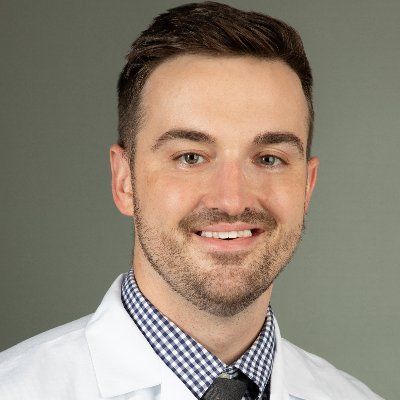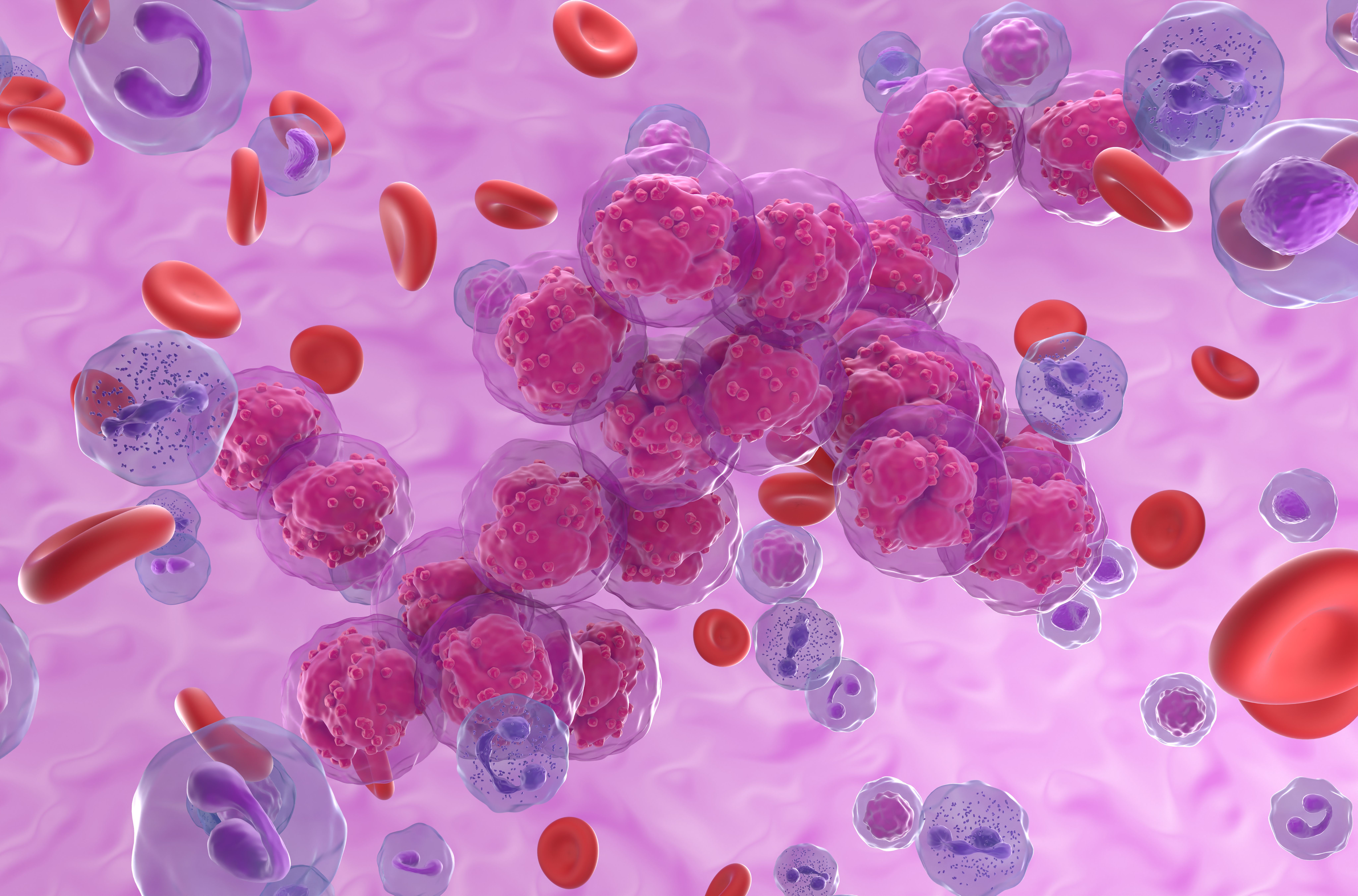ASCO Presentation Provides Real World Evidence of Brexu-cel’s Efficacy in R/R B-ALL
In a real-world population of patients with relapsed or refractory B-cell acute lymphoblastic leukemia, modest efficacy was demonstrated with brexucabtagene autoleucel.
Gregory W. Roloff, MD

Retrospective research shows that brexucabtagene autoleucel (Tecartus; brexu-cel) induces high rates of complete remission (CR) with minimal residual disease (MRD) negativity in real-world patients with relapsed or refractory B-cell acute lymphoblastic leukemia (B-ALL) ) who received the CAR T-cell agent as post-approval, standard-of-care treatment.1
The findings, which were presented during the 2023 ASCO Annual Meeting, are from 70 patients who underwent day +28 evaluation. Ninety-one percent of the patients achieved a CR or a CR with incomplete count recovery (CRi; CR/CRi). The majority of those who responded to brexu-cel experienced MRD-negative remissions (n = 54/64). Of 10 patients who had central nervous system (CNS) disease and received the product, 80% achieved a CR; notably, 7 of the 8 patients who responded had CNS3 status.
Duration of remission was evaluated in 54 responders, and 83% of patients with an MRD-negative CR continued to be in remission at 6 months after infusion with brexu-cel. Only 35% of the 10 patients who were in CR and had MRD positivity remained in remission at that time point.
“We noted leukemic clearance in a majority of patients with CNS disease—especially CNS3,” said Gregory W. Roloff, MD, a hematology/oncology fellow at The University of Chicago, in a presentation of the data. “Achieving MRD negativity appears to be important for maintaining a remission at 6 months post brexu-cel, although this might be improved with maintenance therapy and consolidative treatment. We’ll need larger cohorts and more follow-up time to further adjudicate the effect of those strategies.”
Despite the progress made over the years for this patient population, and most individuals respond well to frontline treatment, nearly 50% of patients experience relapse. Prior research has indicated that following initial salvage therapy, the overall survival (OS) rate at 1 year for these patients is 26%. “Expected survival falls precipitously with subsequent relapse episodes,” Roloff emphasized.
Although allogeneic hematopoietic stem cell transplant represents a curative approach for those with relapsed disease, only a small percentage of patients proceed to the procedure, he added. Non-transplant salvage drugs have also become available, such as blinatumomab (Blincyto) and inotuzumab ozogamicin (Besponsa), but new options are needed to provide durable remissions to this population. “Enter ZUMA-3,” Roloff said.
The multicenter, single-arm, open-label, phase 1/2 ZUMA-3 trial (NCT02614066) was launched to evaluate the safety and efficacy of brexu-cel, a CD19-directed autologous CAR T-cell therapy with a CD28 costimulatory domain, in adults with relapsed or refractory B-ALL. Key eligibility criteria included being at least 18 years of age, having an ECOG performance status of 0 or 1, and having greater than 5% blasts.
“I’d like to point out that the inclusion depended on the presence of overt morphologic disease, greater than 5% blasts, and excluded patients with CNS3 disease or individuals with CNS2 disease and accompanying neurologic deficits,” Roloff noted.
A total of 71 patients underwent apheresis, and 55 were infused with the CAR T-cell therapy. Data from the phase 2 portion of the trial showed that brexu-cel elicited a CR/CRi rate of 70.9%, which included a CR rate of 56.4%.2 Based on these data, in October 2021, the FDA approved brexu-cel for use in adult patients with relapsed/refractory B-ALL.3
“Within the first year of use, there was interest among cell therapy doctors to get a sense of how this product was performing on the ground, outside the context of a clinical trial, and hence, this effort was formed,” Roloff said. The Real World Outcomes Collaborative of CAR T-cell Therapy in Adult ALL (ROCCA) was established in the fall of 2022.
With ROCCA, Roloff and colleagues are building a comprehensive dataset for this population that considers certain patient demographics, disease characteristics, clinical trajectories, prior lines of treatment, toxicities, and long-term outcomes of those who receive brexu-cel.
The retrospective, rolling cohort study utilizes a HIPAA-compliant REDCap database that is housed and maintained at Stanford, Roloff noted. To be included in the study, patients needed to be at least 18 years of age and have received the CAR T-cell therapy after its approval in October 2021 at one of the 13 participating clinical sites in the United States. “Our data collection began in October 2022, about a year after brexu-cel hit the US market,” he said.
Acute lymphoblastic leukemia (ALL) cancer cell clusters in the blood flow: © LASZLO - www.stock.adobe.com

At the time of the data lock, 76 patients comprised the cohort. The median age of these patients was 44 years (range, 18-81). Just under half (46%) of the patients were female and 25% were Hispanic. Seventy-one percent of patients had Ph-negative biology. These patients had previously received a median of 3.5 lines of therapy (range, 1-9), which included blinatumomab (53%) and inotuzumab (37%); 46% of patients previously underwent transplantation.
“Interestingly, and this is a point of contrast with the ZUMA-3 trial, 31% of patients in this real-world cohort received brexu-cel without evidence of morphologic disease; this included 19% of those who were in CR with MRD positivity, and 12% who were in MRD-negative CR,” Roloff noted. He added that 10 patients had CNS disease, with 11% having CNS3 disease. The median follow-up for survivors was 8.3 months.
“Most of these patients were treated in 2022 amidst an ongoing fludarabine shortage, [so] there was a small number of 8 patients in the study who did not receive traditional lymphodepletion with fludarabine/cytarabine,” Roloff said. These patients received cladribine/cyclophosphamide (n = 5), cyclophosphamide (n = 1), bendamustine (Bendeka; n = 1), or cladribine (n = 1).
As part of the study, the investigators evaluated remission duration after treatment with brexu-cel. At 6 months post-infusion, 89% of the 9 patients who went on to receive maintenance treatment with a TKI or POMP continued to be in remission. Moreover, 80% of 11 patients who proceeded to consolidative transplant also remained in remission at this time point. Sixty-two percent of the 38 patients who did not go on to receive subsequent treatment continued to be in remission.
Progression-free survival (PFS) was evaluated in 70 patients. “We center this analysis at death and remission. Using 6 months as a landmark time point for analysis, PFS data largely separated based on MRD status,” Roloff noted. Those who were in a CR with MRD negativity had a 6-month PFS rate of 78%; in those with an MRD-positive CR, this rate was 35%.
“For overall survival [OS,]…there was little difference between 6 months or less in patients,” Roloff said. Those with an MRD-negative CR after brexu-cel experienced a 6-month OS rate of 94%; this rate was 100% in those with an MRD-positive CR and 50% in those who did not respond to the CAR T-cell therapy. “This likely [reflects] the efficacy of salvage measures,” Roloff said.
Investigators also attempted to determine predictors of achieving an MRD-negative CR following treatment with brexu-cel. However, the analysis did not achieve statistical significance for the majority of variables analyzed “and had fairly wide confidence intervals,” Roloff said. The only variable of statistical significance was younger age vs an older cohort of patients over the age of 60 years (P = .02).
To examine the toxicity of brexu-cel, investigators utilized standard ASTCT criteria for cytokine release syndrome (CRS) and immune effector cell–associated neurotoxicity syndrome (ICANS). CRS data were available for 75 patients. The majority of patients (83%) experienced CRS, but 57 of the 62 events were grade 1 or 2 in severity. Five patients experienced grade 3 or 4 CRS. "Neurotoxicity, however, was more of a mixed bag," Roloff said. ICANS data were available for 76 patients; 61% of patients (n = 46) experienced ICANS, with 17 events being grade 1 or 2 and 29 events being grade 3 or 4.
“Our expectation, our hope, would be that with more patient data available, and more follow-up time for analysis, that we will be able to refine this model and tighten up these confidence intervals,” Roloff added.